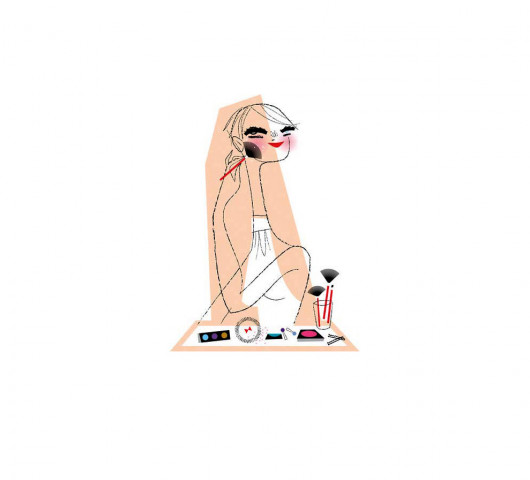Beauty & the Brush

Despite the numerous medical benefits the sun provides, it also subjects us to harmful ultraviolet rays in two forms - UVB and UVA. As a result, our skin ages quickly, leathering and wrinkling prematurely, what’s worse, ultraviolet rays increase the risk of melanoma, or skin cancer. Now days, more and more desi ladies are arriving at doctors’ offices with skin conditions caused by overexposure.
No matter how fair or dark your skin colour may be UVB and UVA rays affect us all the same. If you’re venturing out without safeguarding yourself, STOP. Turn around. Get in your car and immediately drive off in search of sun block. And, be sure the one you find is broad-spectrum (defends against both UVB and UVA rays).
UVB protection is indicated by an SPF number listed on the packaging, such as 15, 30, 45 or higher. What do these numbers mean? The SPF indicates the strength of the sun block against UVB rays. A greater SPF means a higher percentage of rays are blocked after application.
Unfortunately, there is no current system to rate sun block effectiveness against UVA rays. To ensure you’re getting the best broad-spectrum protection, check the ingredients list. Choose a product with either zinc oxide or titanium dioxide. Avobenzone is also proven effective against both UVA and UVB rays; however, it tends to break down more easily than the oxide family. If avobenzone is the primary ingredient, it should be listed with Oxybenzone to help prevent degradation.
Once you’ve found a broad-spectrum sun block determine your SPF level. The right strength for you and how often you must reapply depends on numerous factors. If you’re active, or have fair skin, you’ll need stronger SPF. If you tend to sweat a lot, you may have to reapply sooner than someone who stays out of the blazing sun. Dermatologists do not recommend applying any less than SPF 15, and generally, SPF 30 or 45 is good for most.
Many mistakenly believe a higher SPF means the sun block will last longer. This is not the case. No matter how high the SPF, it is crucial to reapply sun block regularly and prevent exposure to harmful rays. The general rule of thumb is to reuse the product every two hours that you are in the sun.
Apply your sun block generously. You’ll need about a teaspoon for your face and neck. For the rest of your body, squirt out as much product as fits in the palm of your hand (which equals to about an ounce). Also, be sure to apply the sun block at least half an hour before you head outside - it takes that much time to absorb into your skin and begin working.
Sun block must be used even on an overcast day, as UV rays will penetrate the clouds and find their way into your skin. And, as you rub the product all over your body, don’t forget one of the most commonly overlooked areas - your lips! Those shiny lip glosses you wear are actually attracting UV rays. Get your hands on a chapstick with SPF and apply it under your lip colour.
Like us, you too may feel the urge to skip the sun block step before you head out. Just remember, an application a day, will keep the doctor away!
Maria Saadat is author of the popular desi beauty site Lipstick Masala.
QUESTION TIME
Do you have a question about make-up? Can’t figure out a hairstyle for an upcoming wedding? Do your attempts at smoky eye make-up leave you looking like a raccoon? Have no fear! E-mail your questions and issues to style@tribune.com.pk and Maria Saadat will respond to them in an upcoming column.
Published in The Express Tribune, July 30th, 2010.



















COMMENTS
Comments are moderated and generally will be posted if they are on-topic and not abusive.
For more information, please see our Comments FAQ